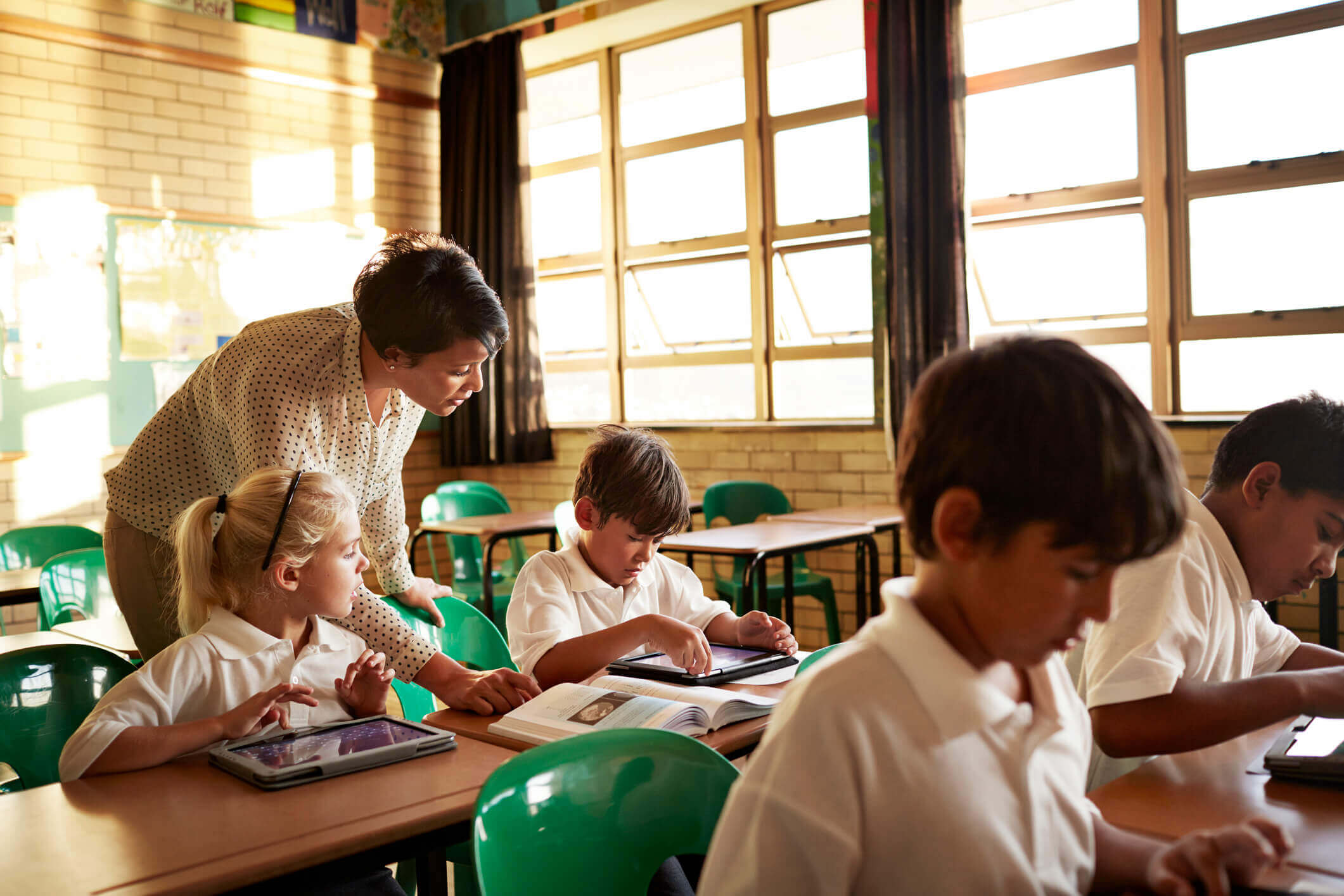Published on September 20th, 2022
A day in the life of a teacher
6 minute read

Not only do teachers help students reach their full academic potential, they also play a direct role in influencing students’ maturity, values and worldview. It’s a great responsibility that requires the management of multiple priorities within a busy school day. So, what’s it like being on the educational frontlines?
We interviewed a teacher with six years of experience to learn their perspective on everything from their influence on school strategy to their time and lifestyle pressures. Here’s what they had to say about their day-to-day role, what they like best about being a teacher, and how the job has changed.
A typical teaching day
What does a good teaching day look like? “It’s really the satisfaction that comes from trying to teach a pupil and then getting that lightbulb moment. It means whatever I’ve said has made sense. It’s all about their confidence, and we’ve seen that there’s no replacement for face-to-face teaching. Schools and teachers aren’t just for sharing knowledge, they’re social places. I make more effort to connect with kids in the social sense, as well as the educational activities – it’s become so important.”
The trend of holistic teaching has also improved the learning experience. “Content used to be more self-contained: you’d teach maths, then English etc. Today, we have an overarching context or theme like ‘shopping’, and then within it you teach literacy or numeracy etc. It has taken time for teachers to work all that out, but it really has helped engage the kids and makes the day more interesting.”
How has teaching changed? “When I started, we weren’t using tech at all. We dabbled in it, using PDFs in our homework. In six years, there’s been a change in the way we use tech. There was one ICT room in schools with a Windows desktop. Now, ICT time isn’t just a one-hour slot in the week, but comes into the maths and literacy lessons, too. The ICT room isn’t really there now; it’s become integrated into the way we teach.”
A BYOD policy has helped bridge the gap in how students perceive tech use. “The kids have brought their own devices in and were shown how to do things for learning. It was interesting seeing them joining the dots between the phone they use for Instagram and all these apps and tools they can use for education, too. Teachers have been asking for these changes and now schools have been more receptive.”
This belief in edtech’s value is shared across the teacher community, with 77% of educators agreeing it’s a great way to engage students, according to the State of Technology in Education Report. Educators recognise the benefits of creating lightbulb moments with students and improving their own productivity to save working out of school hours, as 54% of teachers reported they constantly strive to innovate using technology.
The challenges of being a teacher
Edtech budgets can restrict the value tools and investments are able to deliver in the classroom. “The tech infrastructure used to be flakey, so we didn’t have the best broadband or edtech tools. Budgets are always an issue, but you can be creative with what you have; it’s always been an issue, so there’s no point asking for extra money really.”
Teachers also need full edtech training to lower the burden on upskilling. “It can be hard or scary for teachers to get the tech out of the box, so it’s about being confident in trying those new things. Time pressures definitely play a role, too. These resource issues are a roadblock and it’s a big GDPR process when we want to use new tools, so it takes a long time to get things enabled.”
The pastoral side of the job presents its own demands on teachers’ workloads. “If it’s a deprived area, some children might come from difficult backgrounds. There are safeguarding issues, so I am also dealing with the pastoral side which can be a struggle.”
To help teachers feel supported, they need to be given strategic input so they feel their voices are heard. As it stands, 44% of teachers said they have no say in school strategy, but improving this would help unite the whole school behind staff and student priorities, and lead to more successful outcomes and improvements.




